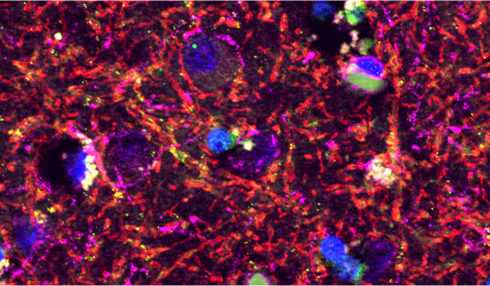| ALS 101: ASOs (Antisense Oligonucleotides) are synthetic molecules that can turn off specific genes—used in precision therapies. OTUD4 is a protein found in RNA granules. Modulating its activity could restore healthy gene function in ALS. RNA granules are cell structures that store and regulate RNA. They play a role in stress responses and are implicated in ALS. STMN2 is a protein essential for nerve cell repair. Its loss is a hallmark of ALS when TDP-43 is disrupted. TDP-43 is a protein that normally helps regulate how cells process RNA, which is essential for making proteins and keeping cells healthy. In ALS and some other neurodegenerative diseases, TDP-43 becomes mislocated, leaving the cell nucleus and clumping in the wrong part of the cell. This disrupts vital gene functions and is considered a key driver of nerve cell damage in ALS. The blood-brain barrier is a protective layer of tightly packed cells that lines the blood vessels in the brain and spinal cord. It acts like a security gate, allowing essential nutrients through while blocking harmful substances, such as toxins or germs. While it protects the brain, it also makes it harder for many medications to reach the brain, which is a major challenge in treating diseases like ALS. Transferrin Receptor (TfR) is a natural transport system repurposed to carry drugs across the blood-brain barrier. |
A groundbreaking collaboration between Denali Therapeutics and researchers at UC San Diego (UCSD) is advancing a bold new strategy to treat ALS by targeting a previously overlooked player: the RNA granule protein OTUD4.
In ALS, a key protein called TDP-43 moves out of the cell’s nucleus and clumps in the cytoplasm, where it no longer performs its normal function. One of its critical roles is helping control the production of STMN2, a protein essential for maintaining and repairing nerve cells. When TDP-43 stops working properly, STMN2 levels drop. This may lead to or contribute to the damage seen in ALS.
This consortium’s novel approach centers on reducing OTUD4, a protein found in RNA granules. The idea: if you lower OTUD4, TDP43 is released from stress granules and free to act in the nucleus to restore STMN2 levels.
Using antisense oligonucleotides (ASOs) (precision molecules that can silence specific genes) the team found that:
- Lowering OTUD4 reduces neurodegeneration and TDP-43 aggregation in laboratory models.
- It restores STMN2 protein levels, even when cells are under stress.
- It is well-tolerated in mice, with no signs of toxicity or harmful inflammation.
Crucially, this work may also shift our understanding of TDP-43. The original hypothesis suggested that OTUD4 might physically trap TDP-43. But new data suggests OTUD4 may instead bind to the same RNA targets, competing with TDP-43. If true, this could mean modifying OTUD4 directly helps rebalance several disrupted genetic programs, not just STMN2.
Improving Drug Delivery to the Brain
To overcome one of the biggest challenges in ALS drug development, delivering treatments across the blood-brain barrier, Denali is using an innovative system called the Transferrin Receptor (TfR) platform. This allows ASOs to be delivered intravenously (by IV) rather than through spinal injections, while still reaching neurons throughout the brain and spinal cord. This method also enables more even and efficient distribution, potentially improving outcomes for patients.
Denali has now identified three lead ASOs that robustly reduce OTUD4 levels and is testing them in a mouse model of ALS with TDP-43 abnormalities. Results are expected soon and could help confirm whether this pathway holds real promise for treating ALS in humans.
💡 Key Takeaway:
By targeting OTUD4 to rebalance gene regulation disrupted by TDP-43, and using a cutting-edge delivery method to reach the entire nervous system, this consortium is advancing a potential new class of disease-modifying therapies for ALS. Early signs are promising, and the path ahead is one to watch closely.



